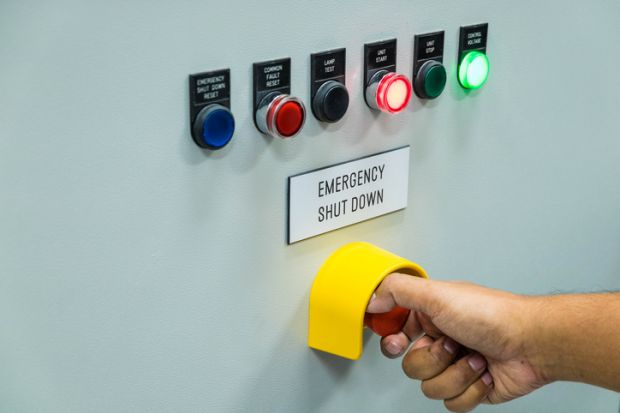Australia’s demand-driven university funding system will need protection from policy “panic” if it is resurrected, a conference has heard.
Grattan Institute higher education expert Andrew Norton said that, if politicians again chose to uncap university places, “demand-driven 2.0” would need a new mechanism for dealing with budgetary uncertainty. “Confidence has been broken,” Mr Norton told the Australian Financial Review Higher Education Summit on 28 August.
“A vice-chancellor will not want to commit tens of millions of dollars to a building project if the whole thing can just change again in the next budget panic.”
Prospects of a revival of the demand-driven system have increased after a week of political turmoil which ended the leadership of former prime minister Malcolm Turnbull. His government had frozen higher education teaching grants late last December, effectively recapping university places, with only limited growth to be permitted from 2020.
But the Labor opposition – whose election stocks have risen because of the government’s internal feuding – has promised to remove the caps again if it wins government.
Deakin University vice-chancellor Jane den Hollander said the “shock” freeze – which cost her institution A$7.2 million (£4.1 million) – had been imposed about three months after her university’s budget had been set for the following year.
She said that, as the leader of the country’s sixth-largest university, she had a “moral obligation” not to run the public dollar into deficit. The risk of suddenly losing anticipated funding is that “you don’t build things”, she told the conference.
“A residence we were going to build, which we should build because it’s safe and affordable for students – you slow those sorts of things down. Casual [staff] are now on the rise. Why? Because it’s affordable,” she said.
Universities Australia executive director Catriona Jackson said there had been “virtually no warning” of last December’s freeze and all university leaders had faced similarly difficult choices.
“Every vice-chancellor had to say, ‘What do I do? Not honour places I’ve already offered, stop building projects, grab money from down the back of the couch?’ That back of the couch money will be gone in 2019. It’s bad this year; it’s going to be much worse next year,” she warned.
Mr Norton told Times Higher Education that universities needed a safety switch to protect them from sudden budgetary upheavals. But equally, the government needed a mechanism – such as the ability to freeze teaching grants – to protect its coffers from snowballing enrolment growth.
He said that there were legislative means of achieving both objectives. One was a grandfathering mechanism to ensure that any freeze took account of the “existing pipeline” of students who had already enrolled.
Another was to make the power to freeze grants a “legislative instrument” that could be reversed by either house of parliament. A third was to oblige the government to seek parliamentary approval for a freeze.
Mr Norton said universities needed to be more assertive in their negotiations with government. They should take their lead from the Catholic schools, whose activism is thought to have cost former education minister Simon Birmingham his portfolio.
“There’s nothing in the act which says you have to take students,” he told the conference. “Just say, ‘No new enrolments until you give us a better funding deal.’
“Doctors walk out of hospitals to get a better deal. You won’t even walk out of a classroom.”
Register to continue
Why register?
- Registration is free and only takes a moment
- Once registered, you can read 3 articles a month
- Sign up for our newsletter
Subscribe
Or subscribe for unlimited access to:
- Unlimited access to news, views, insights & reviews
- Digital editions
- Digital access to THE’s university and college rankings analysis
Already registered or a current subscriber? Login








